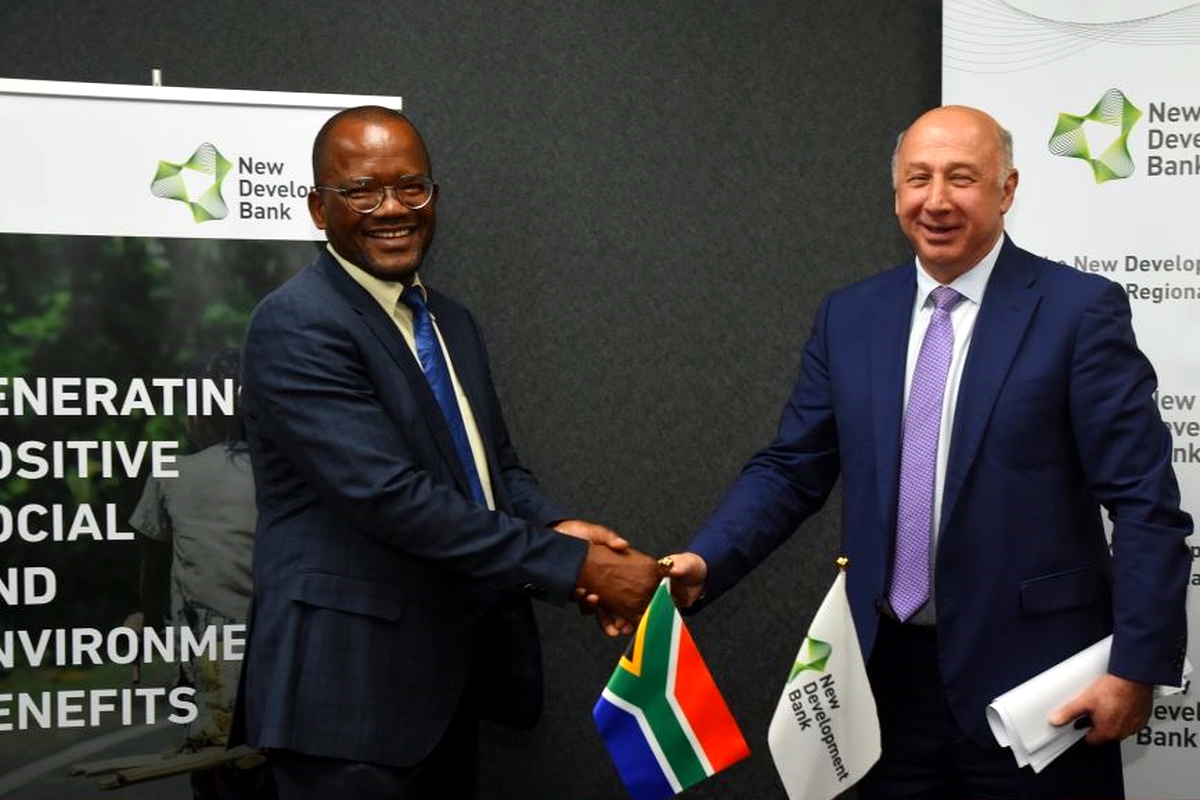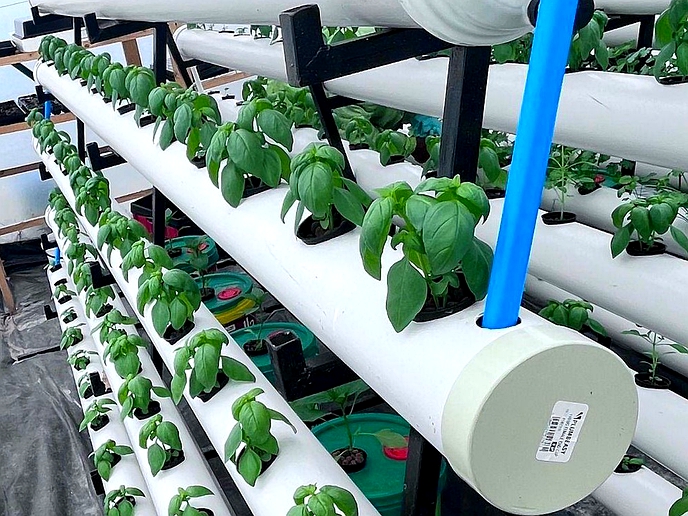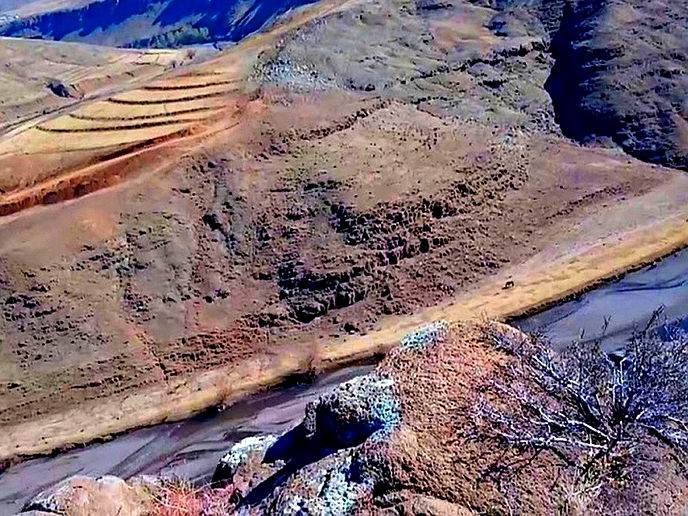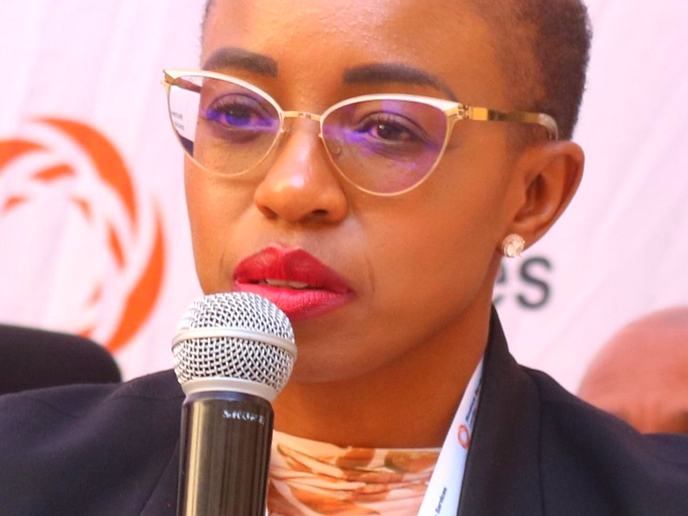While the signature last week of a M3.2 billion loan agreement for infrastructure development for phase II of the Lesotho Highlands Water Project (LHWP) augmented the much needed financial injection in the long delayed second phase of the giant venture, dissatisfaction over a litany of unfulfilled promises of employment, business opportunities and equitable lifetime compensation for Basotho affected by the project remain.
business
Aug. 29, 2023
MOLEFI KHATEBE & 'MATHATISI SEBUSI
9 min read
BRICS injects M3.2b into LHWP

Percy Sechemane, CEO of TCTA and Vladimir Kazbekov Vice-President of NDB
Story highlights
The LHWP Phase II is co-financed by the NDB, the African Development Bank and other financial institutions; and the M3.2 billion loan has a 20-year term and a five-year grace period. Further funding of M1.3 billion has been sourced from development finance institutions and M21.95 billion from commercial banks.
This agreement between South African state entity Trans-Caledon Tunnel Authority (TCTA) and the New Development Bank (NDB) was signed on the sidelines of the BRICS Summit in Sandton, Johannesburg, which ended on Thursday.
Vladimir Kazbekov, Vice President and Chief Operating Officer of NDB signed on behalf of the multi-national bank while Percy Sechemane, Chief Executive Officer of TCTA signed for the TCTA represented by Executive Manager for Project Finance and Treasury Nhlanhla Nkabinde.
“Today marks a significant milestone as NDB and TCTA sign the loan agreement for the implementation of Phase II of the Lesotho Highlands Water Project. This is the first project financed by NDB outside of BRICS countries and it supports South Africa’s commitment to ensure the availability and sustainable management of water, as promoted by Sustainable Development Goal (SDG) 6. This project exemplifies NDB’s dedication to supporting projects that promote access to clean water, while prioritising sustainable management of water resources,” Kazbekov is reported by the South African press saying.
With the loan under the sovereign guarantee of South Africa, the TCTA is charged with financing and implementing the republic’s bulk raw water infrastructure projects the funds are earmarked for construction of advance infrastructure such as bridges, roads and telecommunications.The total cost of the Polihali project is R42 billion and covers the building of the 165m Polihali Dam and a 38km water transfer tunnel in Lesotho, and a bridge above the Senqu River; while also extending electricity and other development infrastructure in Lesotho.
The 15th Summit of the BRICS, made up of Brazil, Russia, India, China, and South Africa as a group of major emerging economies has seen South African president, Cyril Ramaphosa, Chinese president Xi Jinping, Brazil’s president, Luiz Inacio Lula da Silva and Indian prime minister Narendra Modi attend in person, while Russian president, Vladimir Putin, participated virtually.
The leaders deliberated on trade dynamics, infrastructure development and explores various avenues for enhancing both diplomatic and economic cooperation.
They also focused on improving economic ties between their diverse economies, engaging in discussions on trade, investment opportunities, energy cooperation, infrastructure development, the digital economy, and the job market.
Additionally, the Summit engaged with leaders from other 67 invited leaders from Africa, the Latin America, Asia and the Caribbean – including Lesotho Prime Minister Ntsokoane Matekane.
Matekane joined the Summit upon the invitation of South African President Ramaphosa as an observer, as Lesotho is not a BRICS member – and the LHWP is the first project financed by the NDB outside of the BRICS countries.
According to Matekane’s press attaché, Thapelo Mabote, speaking in an interview with Public Eye on Wednesday the South African president extended the invite in his capacity as BRICS chairman.
South Africa assumed the rotating chairpersonship of the BRICS in January this year, the second time that the country occupies the position it held in 2018 since joining the group in 2010.
While this is a welcome development, protests by sections of Basotho affected and who have an interest in operations in the Polihali project continue to punctuate progress in the work started since Phase II was launched in May.
On Monday the Mokhotlong business community rose up in protest action against construction companies that are already operating at Polihali. The protestors expressed disappointment at government, through the Lesotho Highlands development Authority (LHDA), for “disowning us in failing to honour a promise made that we will be given business opportunities when the LHWP Phase II commenced.”
One of the protesting business community members, Motlalepula Tšoaeli, told Public Eye that despite being promised first preference in offering business services, the contractor has, since inception of the project, been hiring and using trucks and machinery from outside the district – going as far as importing machinery and trucks from South Africa.
Tšoaeli said they have raised this concern with the Minister of Natural Resources, Mohlomi Moleko, who has told them that the constructions companies are within their rights to source trucks and machinery from anywhere they wish.
They went on to, early this week, blockade the road leading to the construction site, to force government and LHWP to listen to and address their grievances.
“This attitude by those in authority is not new. Even during the construction of Phase I, we were promised that our equipment will be hired at the project but we had to fight for that to happen.
They have started again…and we hope this time around they listen to us because before the project started we were told to prepare ourselves as we will be given business opportunities at the project. We have gone on to purchase trucks and machinery but the contractor is sourcing the same machinery and vehicles we have from out of the district; they even cross the border to get the same,” he said.
Speaking on progress over compensation to community members affected by the project community member, Leeto Polihali, noted that after a long time of waiting for what is due to them, and were on the verge of giving up, they are now optimistic that they will finally get paid.
An estimated 2 300 households have been affected by the implementation of the LHWP Phase II and approximately 342 households have to be relocated for project developments.
An African Development Bank Group resettlement action plan summary for LHWP Phase II shows that an estimated 1 200 hectares of arable land will be permanently acquired, mainly for reservoir establishment and inundation.
The document shows that loss of this arable and rangeland in the lower lying valleys of the Polihali Basin will have a critical impact on the area as land is in short supply and generally degraded.
Leeto heaped praise on Seinoli Legal Centre for mediating between them and the LHDA on the compensation issue, articulating that since the mediation a lot of people who were not even aware that they have been paid were informed about their payment and asked to check with their banks. He said even those that have not received their money are being updated on the progress.
Enjoy our daily newsletter from today
Access exclusive newsletters, along with previews of new media releases.
LHDA public relations manager, Mpho Brown, had told Public Eye in an earlier interview that the authority was committed to the protection of the wellbeing and the rights of the communities within and around the LHWP project areas; and highlighted that the LHDA continued to work amicably with the communities of Mokhotlong on all areas that impact their lives.
On the state of communal compensations in the LHWP, Brown said that consultations with affected households and communities had largely been completed.
He said compensation for those affected does not happen at the same time and all at once, saying this is done based on the stage at which the work under the project happens. He added that those who are due for compensation at a particular time are the ones whose payments are prioritized.
Brown said the early and rigorous consultation process for all communities and households that will eventually be affected, may be giving an impression that all payments are due to be paid all together at the same time, but that the LHDA has gone through great lengths to help communities understand when they are likely to be directly impacted - saying their specific compensations will be handled at the requisite times.
Communal compensation for entire communities is handled differently than individual household compensation. Once the amount of community assets and the value of those assets are agreed upon between the project and the affected community, and relevant authorities, the community is required to decide for themselves what kind of development project they would like to invest that money on, that will benefit the whole community,” he said.
According to Brown, under Phase II of the LHWP thus far, there are currently 3 529 assets belonging to 1496 households. Of those, 3 047 assets, belonging to 1 190 households have been compensated.
This means that about 80 percent of those that are due compensation at this stage of work have already been paid. For the remaining 20 percent, reasons for them outstanding can range from lack of banking details yet to be provided, family disputes on the correct beneficiaries and other factors.
Local communities in Mokhotlong have over the years vowed to stop construction of the Polihali Dam, if their demands for higher compensation were not met. Apart from business opportunities in the project they demand lifetime compensation from the LHDA for the loss of their land.
The Polihali project, LHWP Phase II, will expand the existing water flow into the South African Vaal River Basin from 780 million cubic metres to 1.27 billion cubic metres a year by 2028. Feasibility studies for Phase II began in October 2005 and were completed in May 2008.
LHWP Phase II, according to the LHDA – the project implementing authority – consists of two separate but related components, water transfer and hydropower generation.
The water transfer component comprises Polihali Dam – a concrete-faced rock-fill dam located about a kilometre downstream the confluence of the Senqu and Khubelu Rivers in Mokhotlong and an approximately 38km long concrete-lined gravity tunnel connecting the Polihali Dam to the Katse Dam.
The exact form of the hydropower component will be determined on completion of feasibility studies.
The Polihali Dam will – at full supply level of 2 075 metres above sea level – inundate more than 5 000 hectares of land in the valleys and tributary catchments of the Senqu and Khubelu Rivers.
Signed into life in 1986, the three major purposes of the multi-billion dollar, multi-dam LHWP, according to Yvonne Mort-Braun in a paper Doing Development are “to transfer water from rural highlands of Lesotho to the industrial centre of South Africa, to provide Lesotho with hydroelectric energy, and to ensure the environmental sustainability of the project areas and the restoration of the living standards of the project affected people.”
LHWP Phase I commenced involved the building of the Katse Dam, a 45km transfer tunnel, a 37km delivery tunnel and the 72MW ‘Muela Hydropower Station. It was completed in 2004.






